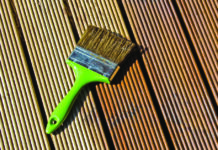The ancient Oak forests of old England hold a special place in our hearts. Some would even go as far as to say that “England was built on Oak.” The Christmas Yule Log was originally an Oak log decorated with mistletoe and holly. Our ancestors carried acorns for good luck, and to ward off illness. The ancient Greeks, Romans, Celts and Druids all thought the tree was magical. Roman soldiers even wore Oak leaf crowns when celebrating victory.
Bearing in mind the star-studded place the not-so-humble English Oak tree has played in the nation’s development and ultimate success, we thought it’d be fun to take a look at the history of the tree and explore what it has done for us over the countless centuries we’ve been exploiting it. From prestigious Oak wood buildings to beautiful, ancient Oak furniture, it’s an impressive story…
A short history of English Oak
A member of the Beech family, the English Oak tree’s formal name is Pedunculate Oak, AKA Quercus. It’s our national tree thanks to its extraordinary height, venerable age and legendary strength, all of which have given it the reputation of being king of the forest. But Oak trees have been here for much longer than humans, with remnants of the trees dating way back to the interglacial period about 300,000 years ago. It is still the commonest tree in our shrinking woodlands.
About the Oak tree itself
Oak is most common in the South and East of England, with its wide, irregular, rounded crown and grey fissured bark. Because the branches often develop low down on the trunk, Oak trees have been adored by tree-climbing children down through the generations. And the shape of the leaves is so familiar it’s more or less imprinted on our national psyche.
When an Oak grows on open land it spreads out. When it’s surrounded by forest it stays slim and slender, and grows taller. It has very deep roots so tolerates drought very well and dislikes shallow soil. Give it a moist, mineral rich soil with a pH value of 4.9 to 5.4 and it’ll be at its happiest, growing as tall as 45 metres! Oak trees don’t even mind being waterlogged, even for long periods, so they’re remarkably resilient, even to salty water.
Find the tallest oak tree you can. It’s likely it’ll be less than 300 years old, since older Oaks were traditionally pollarded to provide firewood and timber for building. The biggest ever recorded English Oak tree, the Newlands Oak, reached a breathtaking size, with a trunk measuring 45 feet around when it fell down. Today’s biggest Oak tree lives in Sherwood Forest, with a girth of 33 feet, weighing 23 tons and is an estimated 800 to 1000 years old. Wow!
Oak wood is remarkably sturdy and lasts for ages. You can still pick up 14th Century and earlier Oak furniture… at a price! It’s perfect for making the frames of buildings. It’s used to make barrels for wine and spirits and to make charcoal. It is used to smoke cheeses and hams, with its distinctive flavour, and the bark is used in the leather tanning process. It is indeed a tree for all seasons and all reasons.
In the 1700s, Oak trees were in high demand by ship builders, and were grown especially for the purpose. In fact every ship commissioned by Drake and Nelson used up the wood from around 2,500 trees. Luckily they grow especially fast for the first 80-120 years of life, which means shipbuilders didn’t need to wait hundreds of years for it to be big enough.
The tree doesn’t produce acorns until it’s between 25-40 years old, and produces the most seeds in middle age when it’s between 80 and 120. It starts to decline into old age from 250-350 years, slowing down growth and eventually losing branches.
The First World War resulted in an acute shortage of the wood, and in 1919 the Forestry Commission was set up to protect existing woods and create new ones, returning our heritage to its former splendour. They have planted countless new forests since then, as well as helping landowners replenish their stock.
Today oak is still one of the most popular hardwoods in Britain, used on an everyday basis for interior joinery and furniture.
20 cool facts about oak wood
- In olden times oak leaves, bark and acorns were used to treat ailments like diarrhoea, inflammation and kidney stones.
- The Bowthorpe Oak in Lincolnshire has the biggest girth of any English Oak. It’s hollow, there’s enough room for 20 people inside and it’s around 1000 years old.
- The River Severn’s ancient Oak breakwaters, still used today, were originally set by the Romans.
- Woodpeckers bury acorns, storing them for winter. They’re also eaten by jays and squirrels, and are a rich food source for British wildlife.
- Oak’s Latin name, Quercus robur, means ‘strength’.
- King Charles the Second famously hid from his pursuers in an Oak tree at Boscobel House.
- The Oak’s open canopy means forest-floor flowers like bluebells can thrive beneath.
- An oak tree can shorten itself in response to the ageing process in an effort to live longer.
- Oaks support more wildlife forms than any other native tree, including more than 280 kinds of insect.
- The Oak has been a national symbol of strength and survival for centuries.
- In prehistoric times, humans used to make flour from acorns.
- Bats love to roost in old woodpecker holes in Oak trees.
- Often the tallest things in a landscape, Oaks are frequently hit by lightning.
- The Oak was sacred to the Greek god Zeus, the Roman god Jupiter and the Celtic god Dagda.
- Loving couples were married under ancient Oak trees during Oliver Cromwell’s time.
- There’s an Oak on the 1987 pound coin.
- Britain’s Oak trees are threatened by several pests and pathogens, including the Oak processionary moth, a foreign pest. The moth’s hairs are poisonous and if you breathe them in, you might suffer from itching and respiratory problems.
- Mistletoe lives on Oak branches.
- Acute Oak decline (AOD) and chronic Oak decline (COD) are two more serious threats to Britain’s Oak trees.
- For more information about our wonderful national tree, explore the excellent BBC Nature web pages.




